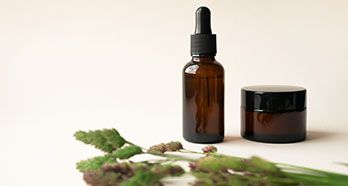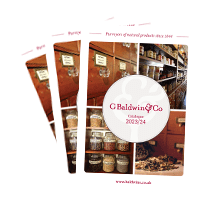Brighten Up Your Smile Naturally Using Charcoal
Brighten Up Your Smile Naturally Using Charcoal
Activated charcoal is having a moment in the sun: from black burger buns and pizza crusts to inky ice creams, cocktails and lattes, 2018 is going through a goth phase. Much like the salted caramel, matcha and lavender trends of previous years, it’s cropping up everywhere – even in our bathrooms and medicine cabinets.
By now, you may have come across activated charcoal as a wonder-ingredient in skincare items like facial scrubs, soaps and cleansers, but have you tried activated charcoal as a natural way to brighten up your smile?
Et tu, toothpaste?
It’s nothing new: charcoal has been used in dentistry for thousands of years. The Romans kicked things off by mixing a tempting toothpowder of charcoal, bark, crushed bone and oyster shells to keep their smiles pearly white.
In the UK, we were busy mixing charcoal with salt, chalk and finely milled brick (yep, brick) to create homemade toothpowders right up until the 1920s, when commercial toothpastes became the method of choice for oral hygiene in post-war Britain.
In a nutshell
The most common forms of charcoal are wood, peat and lignite, although bamboo and coconut charcoal are the carbon of choice for the food and beauty industry.
Today, activated charcoal is usually made from coconut shells, which is the most environmentally friendly option as no trees are damaged in the process. The husks are carbonised by burning them at a high temperature with no oxygen, then steamed at temperatures over 800ºC for 12-24 hours. The steam creates a pore-like texture on the surface of the charcoal particles, which makes it an effective ‘adsorbent’ (sticking to molecules, rather than absorbing them).
Black magic
We’ve come full circle, as the popularity of activated charcoal has put the black stuff back into our teeth-cleaning routines. When used as an alternative to toothpaste, activated charcoal acts as a gentle abrasive, whitening teeth by removing pesky surface stains left by culprits like tea, coffee, red wine and tobacco.
But brushing with activated charcoal does more than just whiten the teeth: it also freshens breath and combats both plaque and oral bacteria, leaving you with a sparkling smile and healthier gums.
Brushing with charcoal: the basics
It’s a quick, effective addition to your teeth-cleaning routine.
- Simply rinse your toothbrush and dip the wet bristles into a tub of activated charcoal powder.
- Gently brush as normal, for up to two minutes.
- Rinse thoroughly with water to remove all traces of the powder.
- For best results, use activated charcoal once a fortnight.
The nitty gritty
You only need to brush your teeth with activated charcoal about twice a month to maintain a naturally bright smile. It’s important to continue using your regular toothpaste in between charcoal brushes to keep tooth decay at bay. We recommend you stick to this routine for three months at a time, and then take a break.
-
Check out our activated charcoal whitening paste remedy for more detailed instructions on how to incorporate activated charcoal to your routine.
 Looking for Qualified Advice on Herbs & Supplements?
Read our health guides, quick tips and popular posts on a range of health conditions, products & fitness
Looking for Qualified Advice on Herbs & Supplements?
Read our health guides, quick tips and popular posts on a range of health conditions, products & fitness
- Aromatherapy (19)
- Cold, Cough & Flu (13)
- Food & Supplements (39)
- Hair (17)
- Headaches & Stress Relief (18)
-
Health & Home (118)
- Allergies (4)
- Beauty (21)
- Blood & Circulation (11)
- Bone Strength & Dental (2)
- Breathing Conditions (3)
- Concentration & Focus (8)
- Digestion & Heartburn (8)
- Exhaustion & Fatigue (15)
- Homewares (3)
- Libido (3)
- Mens Health (22)
- Mother & Baby (1)
- Muscle & Joint Pain (9)
- Sleep Aids (10)
- Stress (3)
- Womens Health (24)
- Homeopathy (38)
- How To's & Guides (128)
- Product Information (30)
- Seasonal Remedies (34)
- Skin Care (35)
- Weight Loss (19)
- Events & Things To Do (7)
- 2024
- 2023
- 2021
- 2020
- 2019
- 2018
- 2017
- 2016
- 2015
- 2014
- 2013
- 2012
- 2011
- 2010
- 2008
- 2007
- 2004
- 2002
- 2001







 At number 64, our Walworth Road Shops are featured in Time out London’s
100 best shops and we couldn’t be more delighted!
At number 64, our Walworth Road Shops are featured in Time out London’s
100 best shops and we couldn’t be more delighted!

 View our Catalogue online.
It is stocked full of our latest oils, beauty products, health foods & gifts.
View our Catalogue online.
It is stocked full of our latest oils, beauty products, health foods & gifts.